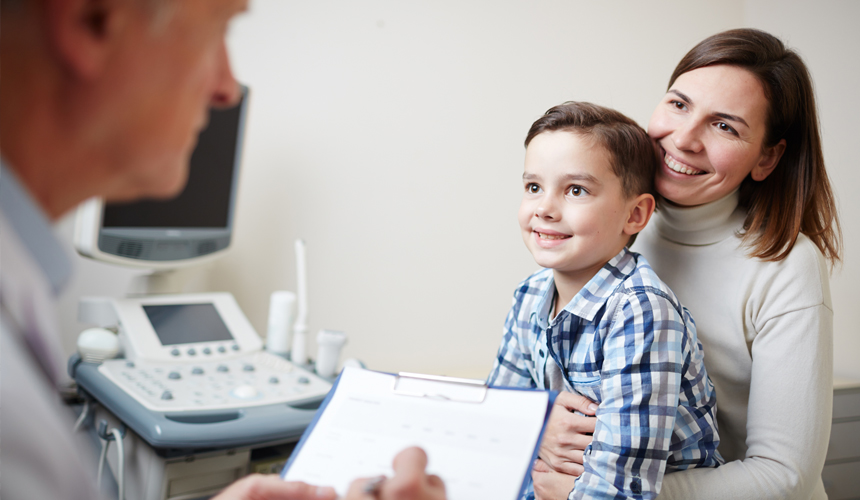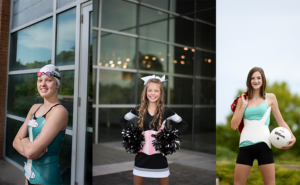Having a child who is undergoing scoliosis surgery can be a highly stressful and worrisome time for parents as well as children.
Scoliosis treatment options
When doctors treat scoliosis using a back brace, the goal is to stop the spinal curve from progressing. Patients also find that physical therapy complements treatments involving braces.
Depending on the degree of spinal curvature, however, your child might need surgery.
Will my child have to wear a scoliosis brace?
Wearing a scoliosis brace is usually the method many orthopedic doctors prescribe between diagnosing scoliosis and planning a surgery. Wearing a brace gives a patient the best treatment to avoid surgery. There are three main types of scoliosis braces the Horton’s team uses to treat this condition.
Boston Brace (Thoraco-Lumbo-Sacral-Orthosis, or TLSO)
The Boston Brace is a plastic body jacket wraps under the arms, under the ribcage, around the lower back, and around the hips. If your child needs this brace, then they need to wear it between 18 and 23 hours a day.
Charleston Bending Brace
Also called the “nighttime brace,” the Charleston Bending Brace applies pressure at night and keeps the curvature from worsening.
Total Contact TLSO (Wilmington Brace)
The Total Contact TLSO- Wilmington Brace is a custom-fitted plastic spinal brace fabricated using a cast taken of the patient while lying down usually on a special spinal casting table, facing up. During the casting, corrective forces specific to the patient’s spinal curve are molded into the cast.
This brace goes onto the body similar to a tight jacket and is know as a total contact due to its lack of gaps or open spots.
What does scoliosis surgery involve?
Called a spinal fusion, surgery for scoliosis involves joining together two or more curved vertebrae into a single bone. It is also minimally invasive. Technological developments in microscopes have made it far less traumatic for patients today than those who underwent this surgery just 10 years ago.
Surgery requires general anesthesia and includes the use of steel rods, screws, bone grafts, or other medical devices and procedures that will ultimately correct spinal issues and support bones.
Whereas surgeons used to cut a larger incision in the back to operate on the spine, surgeons today only need 1 or 2 inches to access the bone using finer techniques and instruments. This also lowers the risk of infection and means your child can go home sooner, resuming normal activities in no time.
How to prepare for scoliosis surgery
Positive family time helps to refocus on something other than the surgery. Plan a family trip or another fun activity. Siblings should also receive a parent’s support, as they may be worried about their brother or sister too.
If you feel it is necessary, explain to your child what the surgery is and why they need it. Let them ask questions, and work through any concerns or emotions they have about it. Explain anesthesia as a special medicine that makes them go to sleep during the operation, but reassure them that they wake up afterward.
Just as you might show your nervous child their new classroom before the first day of school, show them the hospital where surgery takes place. Special needs children may have more of a challenge with surgery, as it disrupts family routine and replaces it with unfamiliar people and environments.
Teens may also be worried about appearance, absence from school, missed classes, homework, and exams, so speak with their teachers and principal to discuss the timeline and ease any anxiety the child may have about missing school and how to handle the return.
Remember that little things make a big difference. On the day of surgery, bring items like books or toys that will give them a sense of comfort and home. You can have teenagers bring their laptop, headphones, books or homework to reduce the stress of surgery.
After the surgery
After the surgery, your child may like visitors, movies, books, and other distractions, or they may like to talk or draw about their time in the hospital. You can encourage your teen to blog or create videos about it, to share their experience, or just so their friends can see and try to understand. Others may just want to move on from the experience and close the chapter. Any way is suitable.
Following the surgery, there may be a need for a post-surgery brace for your child to wear as treatment and healing continues. Follow the doctor’s orders, and let your child rest.
For more information
Be informed and learn more about scoliosis treatment options, including pre- and post-surgery back braces, to help make your scoliosis treatment decision-making process easier. Having a child who is undergoing scoliosis surgery can be a highly stressful and worrisome time for parents, as well as children. Children and teens are resilient, especially if prepared, and here at Hortons O&P, we are here to provide support and help you reduce any anxiety and stress any way we can. With the right back brace for scoliosis, the spine can be discouraged from curving any further, reducing the risks of other health problems. Hortons can explain more as we aim for scoliosis education in Arkansas, and we can prescribe or custom-fabricate any brace in our orthotics lab.
Contact us at 501-683-8889 to schedule an appointment or schedule a consultation regarding pediatric scoliosis in Arkansas.


